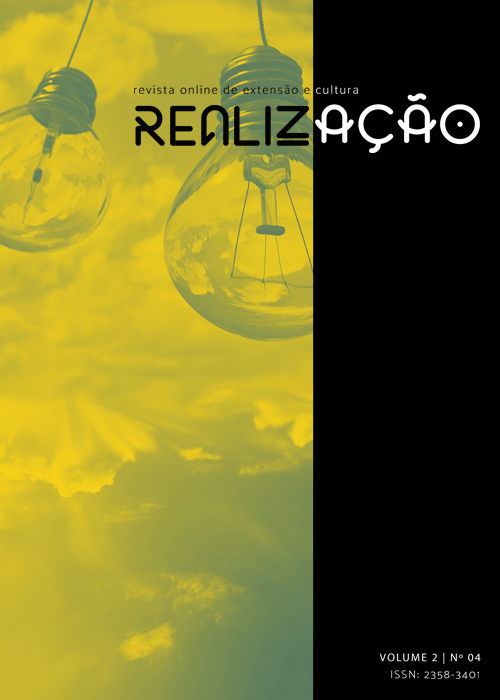Cerrado biome spring restoration program in the Santa Clara II rural settlement, Juti, Mato Grosso do Sul
DOI:
https://doi.org/10.30612/realizacao.v2i4.5929Keywords:
Planting seedlings , Environmental education, Recovery , SustainabilityAbstract
This work aims to promote the environmental restoration of springs that are in critical conditions in the Santa Clara II Rural Settlement in the municipality of Juti, Mato Grosso do Sul, through the transfer of knowledge, as a way of improving the sustainability of the Permanent Preservation Area (APP) of the settlement and developing a group of small producers who are a model for preserving springs in the Cerrado. Mini-courses were given on the recovery and conservation of springs, in which concepts on the subject, types of underground water tables, the most common species, and techniques and methods for recovery and conservation were presented. Subsequently, workshops on environmental education, soil education, agroecology, and sustainable use of the Cerrado biodiversity were held. The participants in this action were enthusiastic and, as instructed, took full care of the seedlings, both during planting and after this activity. It was observed that the actions carried out by this project were effective in raising awareness in this community about the importance of taking care of the environment, especially the springs of the APP of the Santa Clara II Settlement.
Downloads
Downloads
Published
How to Cite
Issue
Section
License
Copyright (c) 2017 Carla Tais Nevoleti Correia Lima, Maristela Alves da Silva Piva, Patricia Santos Reis, Matheus Vinicius Dorce, Caroline Quinhones Froes, Shaline Séfara Lopes Fernandes, Josimo Diego Bazanella Line, Zefa Valdivina Pereira

This work is licensed under a Creative Commons Attribution-NonCommercial-ShareAlike 4.0 International License.
Autores que publicam nesta revista aceitam as normas de publicação, bem como, concordam com os seguintes termos:
(a) O Conselho Editorial se reserva ao direito de efetuar, nos originais, alterações da Língua portuguesa para se manter o padrão culto da língua, respeitando, porém, o estilo dos autores.
(b) Autores mantêm os direitos autorais e concedem à revista o direito de primeira publicação, com o trabalho simultaneamente licenciado sob a Creative Commons Atribuição-NãoComercial-CompartilhaIgual 4.0 Internacional que permite: Compartilhar — copiar e redistribuir o material em qualquer suporte ou formato e Adaptar — remixar, transformar, e criar a partir do material. A Creative Commons Atribuição-NãoComercial-CompartilhaIgual 4.0 Internacional considera os termos seguintes:
- Atribuição — Você deve dar o crédito apropriado, prover um link para a licença e indicar se mudanças foram feitas. Você deve fazê-lo em qualquer circunstância razoável, mas de nenhuma maneira que sugira que o licenciante apoia você ou o seu uso.
- NãoComercial — Você não pode usar o material para fins comerciais.
- CompartilhaIgual — Se você remixar, transformar, ou criar a partir do material, tem de distribuir as suas contribuições sob a mesma licença que o original.
- Sem restrições adicionais — Você não pode aplicar termos jurídicos ou medidas de caráter tecnológico que restrinjam legalmente outros de fazerem algo que a licença permita.


